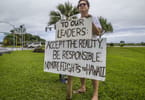(eTN) – “The land of a thousand hills,” as Rwanda is known by her friends from near and far, has in recent years enjoyed a boom in tourism arrivals, and before becoming a victim of its own success with only one major tourism product on offer, acted quickly and decisively to diversify the range of offers to tourists of what to do in the country. The then office for tourism and national parks – ORTPN – now part of the Rwanda Development Board, brainstormed over the options of “what new” to put on the market. It took little time back then to identify the country’s tropical rainforests to be one of the assets tourism could make use of. While sports activities like cycling and boat trips on Lake Kivu were also added, as was birding, it was primarily the forests which held the solution to the diversification of the then Rwandan single-focus product of gorilla tracking.
Preparations went into high gear in the early part of the last decade to achieve these goals, and by 2005, all was in place for the government to formally declare the Nyungwe Forest a national park, elevated from the status of a mere forest reserve. Protection of the area dates back to the times when Rwanda was a German colony, with the subsequent colonials, the Belgians, then reaffirming the reserve status, prohibiting encroachment and indiscriminate cutting of the valuable tropical hardwood trees.
Sadly, during the days of the previous regime, protective measures for the forest were largely abandoned and only fully restored after the new Rwanda rose from the ashes of the genocide and restored law and order in the country.
Located in the south of Rwanda and partly bordering neighboring Burundi, Nyungwe is part of an ancient medium to high altitude rain forest belt crossing from Rwanda into the Congo, where population growth and deforestation took its toll on many of those forests over the past 50 years. Still, Nyungwe National Park covers an area of almost 1,000 square kilometers with elevations rising from about 1,600 meters to nearly 3,000 meters above sea level, making it arguably the largest forest national park in all of Africa.
Good annual average rainfall, reaching up to 2,500 mm per year, keeps the park’s rich biodiversity intact and provides a thriving environment for a record 13 species of primates (to the knowledge of the writer, only matched by Kibale Forest National Park in Uganda), around 275 bird species of which 24 are endemic to Nyungwe, over 1,060 plant and tree species, over 80 mammal species, and some 80 amphibian and reptile species. Especially impressive here is the fact that the black and white colobus monkeys are often found in clans numbering several hundred, whereas elsewhere they are counted at best in their dozens or only seen in single digit numbers. Furthermore, habituation of the golden monkey is ongoing in Nyungwe, giving visitors a real and rare bonus.
What may also be of interest to readers is the fact that the springs of the River Kagera have been traced all the way to the Nyungwe National Park, and while the “Source of the River Nile” is undoubtedly in Jinja, Uganda, some of the more distant headwaters of what eventually becomes the Nile – the Kagera empties into Lake Victoria and is one of the major contributors to the lake – can be traced all the way to this park.
It is little wonder then that Rwanda’s tourism industry swiftly embraced their latest national park, and RDB–Tourism and Conservation spared no effort to open up the forest by creating paths and trails, while also training guides able to interpret the incredibly rich variety of flora and fauna to visiting tourists.
Special attention was paid to promoting the new national park abroad at tourism fairs and exhibitions, and although Rwanda remains globally best known for its mountain gorilla tracking at the Parc de Volcanoes in the west of the country, more and more visitors now use the opportunity of being in Rwanda to also visit the Nyungwe National Park.
Dubai World saw such a great potential in the park, that in spite of the global financial and economic crisis – which took its toll on “Dubai Incorporated,” too – they committed the funds to construct a luxury ecofriendly lodge right at the edge of the forest, which opened its doors to the public last year. While others of their planned projects in Rwanda were put on hold, due to be reactivated when market conditions will be conducive again, the Nyungwe Forest Lodge became their flagship operation in Rwanda and quickly established itself as “the place to stay” when visiting the park.
Soon after the lodge opened, another novelty was added at the park, when a forest canopy walk was first planned and then constructed, which now allows visitors to “walk the tree tops” and get an insight into the life as it exists in the tall tropical trees. Combined with good interpretation and expert explanations from the well-trained guides, the “walk in the trees” opens an entire new world for visitors and truly makes it a unique experience not found anywhere else across Eastern Africa so far. The Rwanda Development Board attributes its sectoral performance last year largely to the addition of Nyungwe National Park. Rwanda for the first time ever in 2010 exceeded tourism earnings of US$200 million, and visitor numbers grew by a staggering 14 percent compared to the already record year of 2009, making it one of the best performing tourism sectors in the whole of Eastern Africa.
The government of Rwanda has also committed itself to further restore the ancient forest belt, and by 2035 about a third of the country is supposed to be under forest again, up substantially from today’s situation. Gaps in the forest belt are due to be closed to have a seamless connection again and to allow game and birds to once more enjoy a habitat as in the old days and other forests, as and where encroached, will also be part of deliberate re-forestation efforts. This is remarkably supported by populations living near the forests, as they finally understood that forests are “water towers” and a source of sustainable supplies of medicinal plants, good for the micro climate and generally able to bring investment and jobs to their villages. Of course it must be said that Rwanda’s superb sensitization and education of populations went a long way in achieving the cooperation of the ordinary people.
Plans are also underway to turn more forests from simple and less protected reserves into proper national parks, a measure undoubtedly also aimed to cater to more tourist visitors and offer more attractions across the country, and by doing so extending the average stay and average spending of tourist visitors.
Unlike in some neighboring countries, where such forest national parks, leave alone forest reserves, are habitually encroached and where politicians are rather lukewarm to speak up in favor of strict enforcement and protection, here in Rwanda, forest conservation is a key element in promoting tourism, from the Virunga volcanoes’ rainforests – home of the rare mountain gorillas – to the Nyungwe Forest at the border with Burundi.
Tourism and conservation in Rwanda has the full backing of government, with no ifs, ands, or buts, and the success of the sector is evidence enough that it is the right thing to do. Tourism, including forest tourism, is generating additional employment, bringing direct foreign investments to the country, and pegging foreign exchange earnings right on top of the economic scale.
Forests for the future and for mankind’s survival – here in Rwanda at least – is not an empty slogan but part of the vision for a brighter future of the entire country and a significant measure and contribution towards the global fight against climate change.
WHAT TO TAKE AWAY FROM THIS ARTICLE:
- Special attention was paid to promoting the new national park abroad at tourism fairs and exhibitions, and although Rwanda remains globally best known for its mountain gorilla tracking at the Parc de Volcanoes in the west of the country, more and more visitors now use the opportunity of being in Rwanda to also visit the Nyungwe National Park.
- As Rwanda is known by her friends from near and far, has in recent years enjoyed a boom in tourism arrivals, and before becoming a victim of its own success with only one major tourism product on offer, acted quickly and decisively to diversify the range of offers to tourists of what to do in the country.
- Good annual average rainfall, reaching up to 2,500 mm per year, keeps the park's rich biodiversity intact and provides a thriving environment for a record 13 species of primates (to the knowledge of the writer, only matched by Kibale Forest National Park in Uganda), around 275 bird species of which 24 are endemic to Nyungwe, over 1,060 plant and tree species, over 80 mammal species, and some 80 amphibian and reptile species.






















